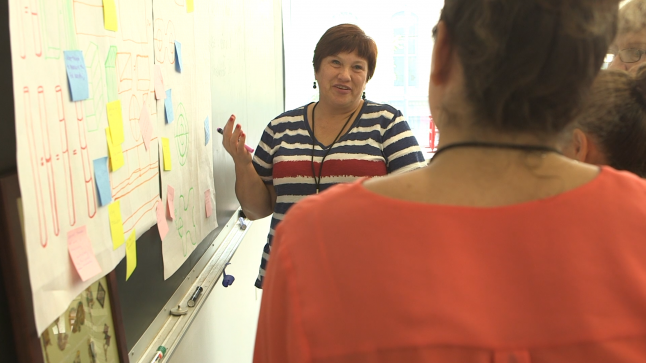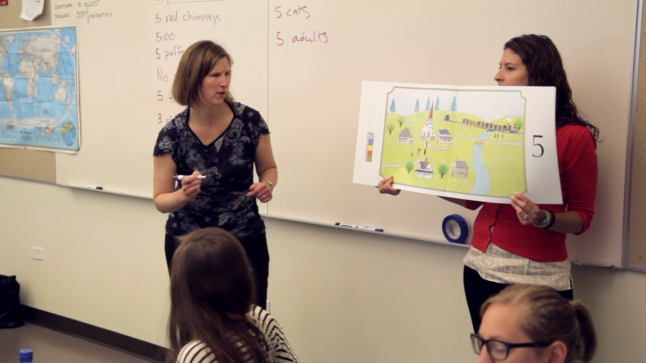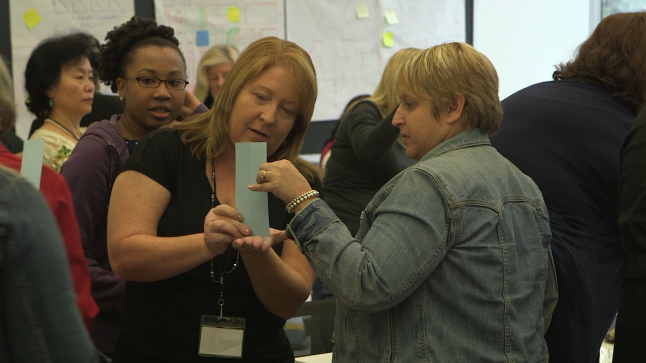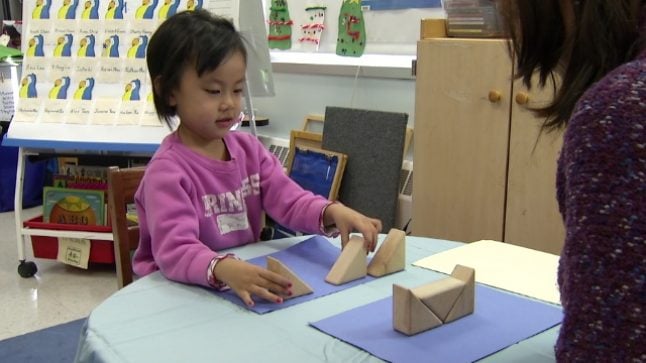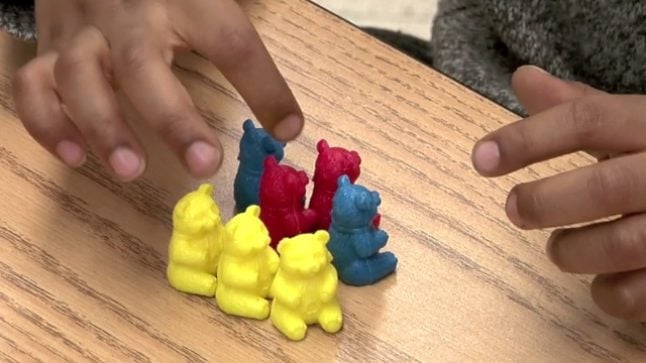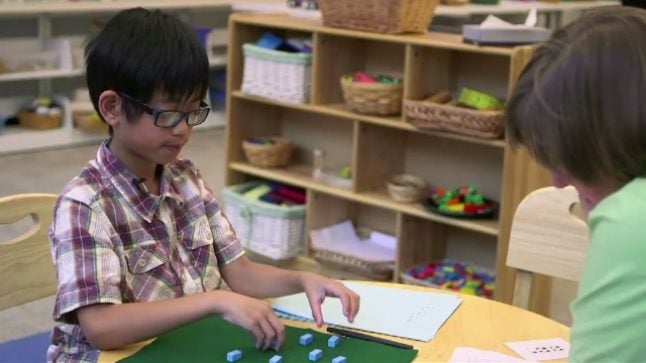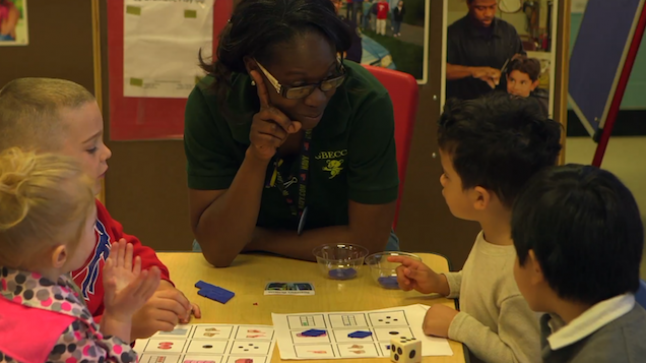Content Format: Video
Math-related resources and free stuff for teachers.
Series: Adult Learning
Exploring Unit Block Relationships
February 25, 2019
Examining sets of unit blocks challenges educators to think about relationships of the blocks. A deeper understanding of the features of unit blocks empowers teachers to support children in ways that promote joyful math learning.
- Topic: Number Operations, Shape
- Age/Grade Level: Adult Learners, Pre-K, Kindergarten
- Tags Blocks
Series: Adult Learning February 25, 2019
Different Uses of Numbers with Anno’s Counting Book
Books are a powerful way to launch math investigations with children, but also with adult learners. Our Learning Labs often use picture books as a doorway into mathematics. Here, teachers explore multiple representations of the…
- Topic: Number Sense
- Age/Grade Level: Adult Learners, Pre-K, Kindergarten
- Tags Mitsumasa Anno, Anno’s Counting Book
Series: Adult Learning February 24, 2019
Math-Related Greeting Builds Safe Learning Community
Our Learning Labs open with greetings that serve the dual purpose of building a safe learning community while introducing a math topic in a fun, accessible way. Here, adults directly compare the lengths of paper…
- Topic: Measurement
- Age/Grade Level: Adult Learners, Pre-K, Kindergarten
Series: Focus on the Child December 12, 2018
Transforming Three-Dimensional Shapes with Child 36
This child successfully attempts to match geo-solids using triangular prism-shaped blocks. Focus on the Child videos are taken from one-on-one interviews with individual children. The interviews are designed to elicit evidence of children’s mathematical thinking.…
- Topic: Spatial Relationships, Shape
- Age/Grade Level: Pre-K, Kindergarten
- Tags English Language Learner, Child 36
Series: Focus on the Child December 10, 2018
One-to-One Correspondence with Child 15
A child counts an organized collection of bears. Children often sort collections into groups by color. Here, a preschooler assumes he has equal groups until he counts them.
- Topic: Counting
- Age/Grade Level: Pre-K, Kindergarten
- Tags Child 15
Series: Focus on the Child December 8, 2018
Counting a Large Collection with Child 14
A second grader has a partial understanding of counting in equal groups, but is still working on rational counting. Focus on the Child videos are taken from one-on-one interviews with individual children. The interviews are…
Series: Focus on the Child November 17, 2018
Subtraction as the Inverse of Addition with Child 5
This second grader uses a known number combination (3 + 9) to solve a subtraction problem, showing an understanding of how addition and subtraction are related as inverse operations.
- Topic: Number Operations
- Age/Grade Level: 1st Grade, 2nd Grade, 3rd Grade
- Tags Child 5
Series: Hear from the Experts October 24, 2018
Measuring Math Understanding of ELLs with Barbara Sarnecka and David Purpura
A panel of early math experts engage with the audience at Promising Math 2017 to consider the challenges of getting a true picture of what young children understand about numbers.
- Age/Grade Level: Adult Learners, 1st Grade, 2nd Grade, 3rd Grade
- Tags Promising Math
Series: Hear from the Experts October 23, 2018
Creating Opportunities for Early Math with Rodrigo Gutiérrez
The role of play and importance of shared experiences in early math is discussed with Rodrigo Gutiérrez, Co-Director of the Center for Retention-Recruitment for Math Teachers at University of Arizona.
- Age/Grade Level: Adult Learners, Pre-K, Kindergarten, 1st Grade
- Tags Culture, Promising Math
Series: Focus on Play September 26, 2018
The Match ‘Em All Game
This bingo-like game allows children to think about numbers in different ways. It focuses children on the attribute of quantity of small sets and helps them build a more robust number sense.
- Topic: Number Sense
- Age/Grade Level: Pre-K, Kindergarten
- Tags Unifix Cubes, Subitizing, Games, Dice
